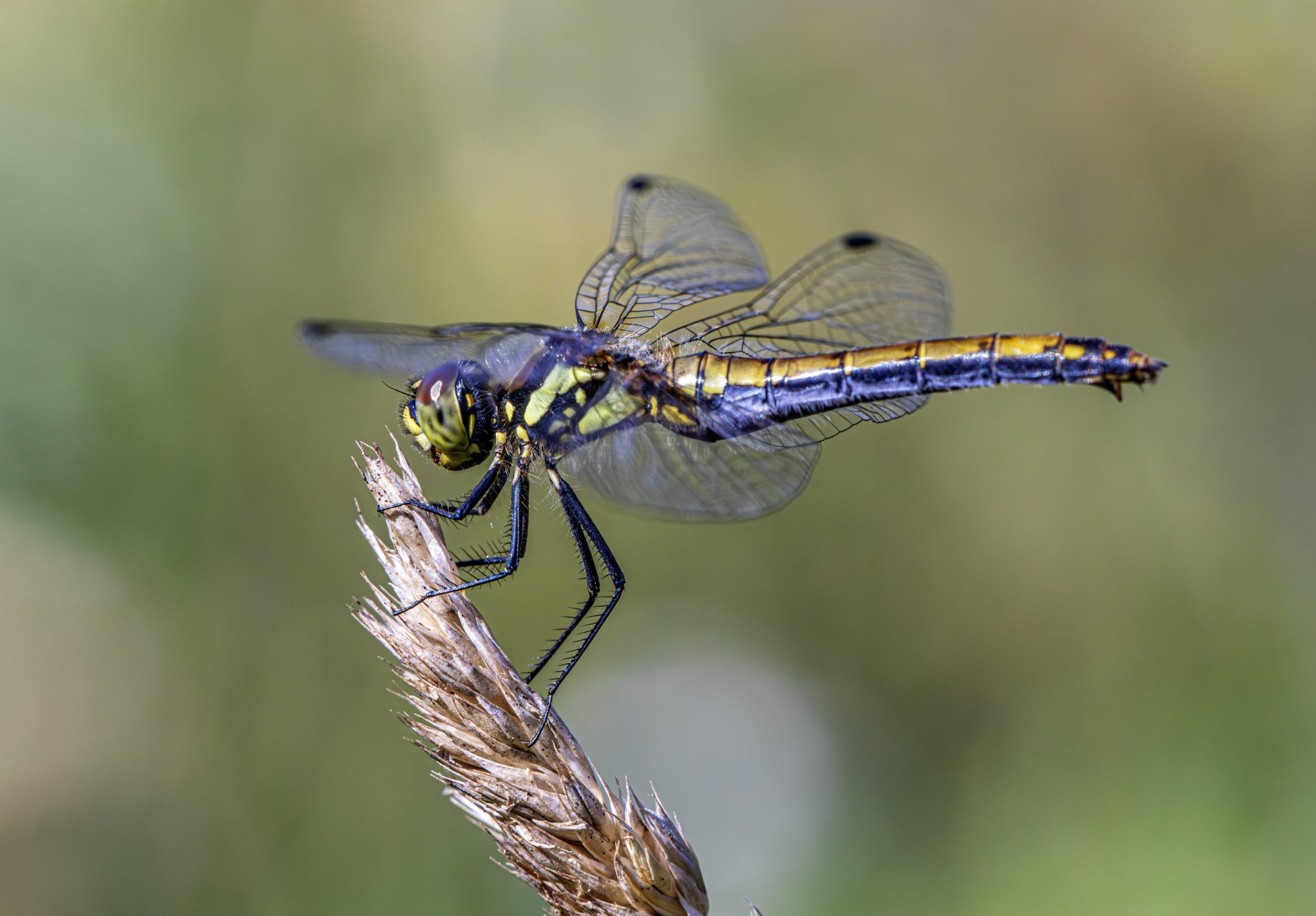Here’s a deep overview of the Black Darter (Sympetrum danae), one of Europe’s smallest and darkest dragonflies.
🪁 Black Darter (Sympetrum danae)
🔹 Taxonomy
- Order: Odonata
- Suborder: Anisoptera (Dragonflies)
- Family: Libellulidae (Skimmer dragonflies)
- Genus: Sympetrum
- Species: S. danae
🌍 Distribution and Range
The Black Darter is a Holarctic species found across:
- Europe: Common in northern and central Europe; less frequent in southern Mediterranean regions.
- Asia: Siberia, northern China, Mongolia, Japan.
- North America: Found in Canada and northern U.S. states, where it is called the Black Meadowhawk.
Most abundant in northern climates and upland habitats.
🏞️ Habitat
- Prefers acidic wetlands, bogs, and heathland pools.
- Found in shallow, nutrient-poor ponds with sphagnum moss.
- Adults forage in meadows and open sunny clearings, often perching low on vegetation.
✨ Identification Features
The smallest European darter dragonfly (wingspan 50–60 mm).
- Males:
- Entirely black body with dark face and legs.
- Wings often with a smoky base.
- Females & immature males:
- Yellowish-brown with black markings.
- Ageing females may darken significantly.
- All sexes:
- Narrow abdomen compared to other darters.
- Characteristic black pterostigma (wing spots).
🌸 Diet and Role
- Adults: Feed on small flying insects such as midges, mosquitoes, and flies.
- Larvae (nymphs): Aquatic, ambushing small aquatic invertebrates and occasionally tadpoles.
Ecological Role:
- Natural controller of insect populations.
- Important prey for birds, frogs, and spiders.
🔄 Life Cycle
- Eggs: Laid in flight, dropped into shallow water or onto floating vegetation.
- Larvae: Develop over 1–2 years, depending on climate; adapted to cold, acidic bog pools.
- Emergence: Adults typically appear from June to October, peaking in late summer.
- Adults: Short-lived, surviving only a few weeks after mating.
🦋 Behavior
- Less territorial than larger dragonflies.
- Often found in groups, basking on low vegetation.
- Males patrol small areas but do not chase rivals aggressively.
- Weak fliers compared to other darters, often perching more than flying.
⚖️ Conservation Status
- IUCN: Least Concern.
- Still widespread, but populations are declining in parts of Europe due to:
- Loss of bog habitats.
- Drainage and peat extraction.
- Pollution and climate change (drying of wetlands).
✅ In summary:
The Black Darter (Sympetrum danae) is a small, dark dragonfly specialized for bogs and acidic wetlands. Its males are strikingly black, while females are yellow-brown, turning darker with age. Although still widespread, it is a sensitive species whose future depends on the protection of bog and heathland ecosystems.
Visited 31 times, 4 visit(s) today
Views: 2245
Subscribe to the newsletter:
